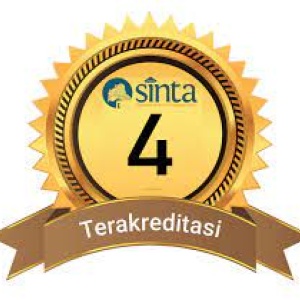Kajian Resepsi Terhadap Teks Futuhu 'l-'Arifin
DOI:
https://doi.org/10.37014/jumantara.v10i2.534Keywords:
Futuhu 'l-'Arifin, Mursyid, Zikr, Order, and reception.Abstract
The text of Futuhu 'l-'Arifin speaks of the way of zikr in the Qadiriyah wa Naqsyabandiyah order. Based on the manuscript inventory, the number of Futuhu 'l-'Arifin manuscripts is four manuscripts, three Malay and one Javanese manuscript. The data sources used are three Malay-language manuscripts, Futuhu 'l-'Arifin , Futuhu 'l-'Arifin, and the order which was raised to Qadiriyah and Naqsyabandiyah. Of the three manuscripts, the manuscript Futuhu 'l-'Arifin is chosen because it has advantages, such as older age, completeness and manuscript readability. Reader reception is obtained from four selected speakers based on specific qualifications. The four speakers came from the four Salafiyah boarding schools in Central Java adherents of the Qadiriyah wa Naqsyabandiyah. Based on the reception of the text reader Futuhu 'l-'Arifin, it is known identity and some social functions and benefits of the teachings Futuhu 'l-'Arifin. The identity of Futuhu 'l-'Arifin is a special method of zikr for the order of Qadiriyah wa Naqsyabandiyah which was narrated by Shaykh Ahmad Khatib Sambas. Meanwhile, social function and the benefit of the teachings of Futuhu 'l-'Arifin, that is (1) elicit social sensitivity and good rulings; and (2) calmness and tranquility.References
Alba, Cecep. 2012. Tasawuf dan Tarekat Dimensi Esoteris Ajaran Islam. Bandung: PT. Remaja Rosdakarya.
Al-Hamd, Muhammad bin Ibrohim. 2009. Melembutkan Perasaan.Solo: Qalamedia.
Bruinessen, Martin Van. 1992. Tarekat Naqsyabandiyah di Indonesia. Bandung: Mizan.
___________________. 1995. Kitab Kuning: Pesantren dan Tarekat. Bandung: Mizan.
Fang, Liaw Yock. 2011. Sejarah Kesusastraan Melayu Klasik. Jakarta: Yayasan Pustaka Obor Indonesia.
Ikram, Achadiati, dkk., 2004. Katalog Naskah Palembang: Catalogue of Palembang Manuscripts. Tokyo: Tokyo University of Foreign Studies.
Junus, Umar. 1985. Resepsi Sastra: Sebuah Pengantar. Jakarta: PT Gramedia.
Mukani. 2016. "Ulama Al-Jawi di Arab Saudi dan Kebangkitan Umat Islam di Indonesia" dalam Al-Murabbi Vol. 2 No. 2 Januari 2016: 202-229.
Mulyati, Sri. 2006. Tasawuf Nusantara: Rangkaian Mutiara Sufi Terkemuka. Jakarta: Kencana.
Muslih, Abdurrahman Al-Maroqy. 2011. Tuntunan Thoriqoh Qodiriyah wan Naqsyabandiyah. Semarang: Al-Ridha (Thoha Putra Group).
Sadli, Saparinah. 1983. Di Atas 40 Tahun Kondisi Problematik Pria dan Wanita. Jakarta: Sinar Harapan.
Sarqawi, Usman Said. 2013. Zikrullah. Bandung: PT. Remaja Rosdakarya.
Segers, Rien T. 2000. Evaluasi Teks Sastra: Sebuah Penelitian Eksperimental Berdasarkan Teori Semiotik dan Estetika Resepsi. Diterjemahakan oleh Prof. Dr. Suminto A. Sayuti. Yogyakarta: Adicita Karya Nusa.
Taufiq, Ahmad. 2016. Sastra Kitab Menguak Nilai Religiusitas pada Naskah Melayu Klasik. Surakarta: Gareng Pung Publisher.
Widiyanto, Asfa. 2015. "Manaqib Writing in the Circle of the Tariqa Qadiriyya wa Naqsyabandiyyah: A Study In Muhammad Siddiq Al-Salihi's Nayl Al-Amani" dalam Heritage of Nusantara International Journal of Religious Literature and Heritage. Vol. 4 No. 2 Desember 2015: 213-242.
Wijaya, Askin. 2014. "Nalar Kritis Pemikiran Hasyim Asy'ari (Kritik Klaim Kewalian dan Fenomena Bertarekat)" dalam Kontemplasi Vol. 02 No. 01, Agustus 2014: 199-224.
______________.<https://lektur.kemenag.go.id/manuskrip/web/koleksi-detail/lkk-pdg2013-psm66.html#ad-image-0> (diakses pada November 2017 pukul 13.15 WIB).
______________. <https://dokumen.tips/documents/fathul-arifin.html>(diakses pada 16 Oktober 2018 pukul 06.22 WIB).
Downloads
Additional Files
Published
Issue
Section
License
Copyright (c) 2019 Jumantara: Jurnal Manuskrip Nusantara

This work is licensed under a Creative Commons Attribution-ShareAlike 4.0 International License.
- This statement is the author's commitment to respect copyright, both in terms of citing other people's work and utilizing journal content. If necessary, the author can send an Authenticity Statement of Article stating that "this work is the author's original idea and has never been sent to another publisher and published in any publication"
- The author retains copyright.
- The moral rights of publication belong to the author.
- Formal legal aspects in the use of journal publications refer to the Creative Commons Attribution-ShareAlike 4.0 (CC BY-SA) license, which means that journal content can be used freely for any purpose.










